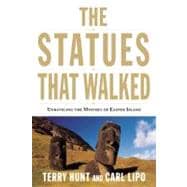
What is included with this book?
| A Most Mysterious Island | p. 1 |
| Millions of Palms | p. 19 |
| Resilience | p. 33 |
| The Ancient Paths of Stone Giants | p. 55 |
| The Statues That Walked | p. 73 |
| A Peaceable Island | p. 93 |
| Ahu and Houses | p. 109 |
| The Benefits of Making Moai | p. 131 |
| The Collapse | p. 147 |
| Conclusion | p. 177 |
| Environmental Constraints | p. 181 |
| Lithic Mulching and Manavai | p. 191 |
| Notes | p. 199 |
| Bibliography | p. 211 |
| Acknowledgments | p. 227 |
| Index | p. 229 |
| Table of Contents provided by Ingram. All Rights Reserved. |
The New copy of this book will include any supplemental materials advertised. Please check the title of the book to determine if it should include any access cards, study guides, lab manuals, CDs, etc.
The Used, Rental and eBook copies of this book are not guaranteed to include any supplemental materials. Typically, only the book itself is included. This is true even if the title states it includes any access cards, study guides, lab manuals, CDs, etc.